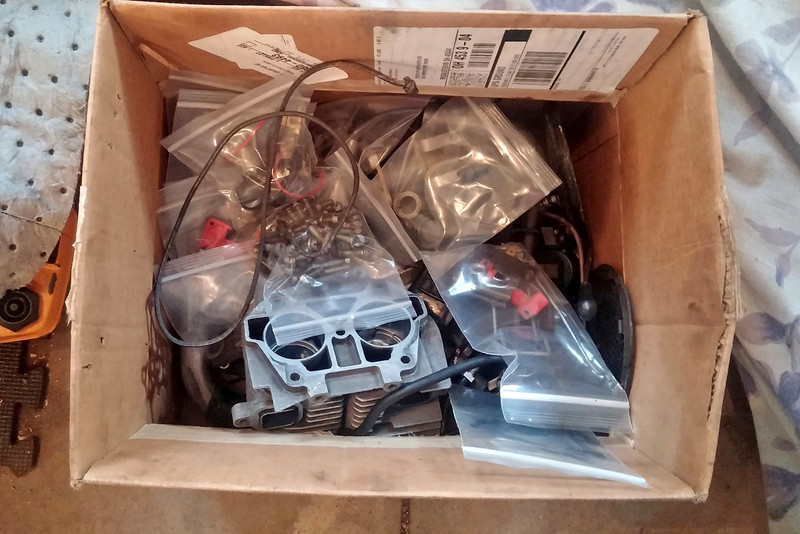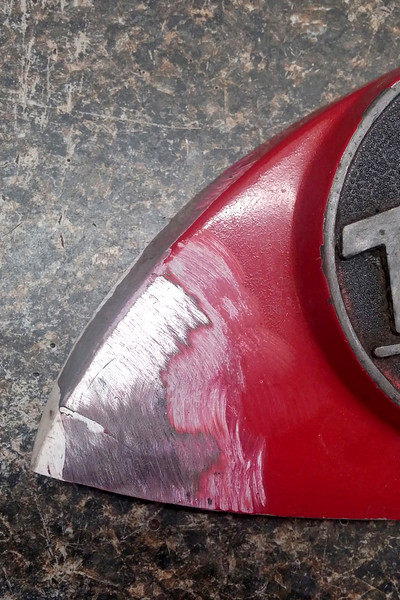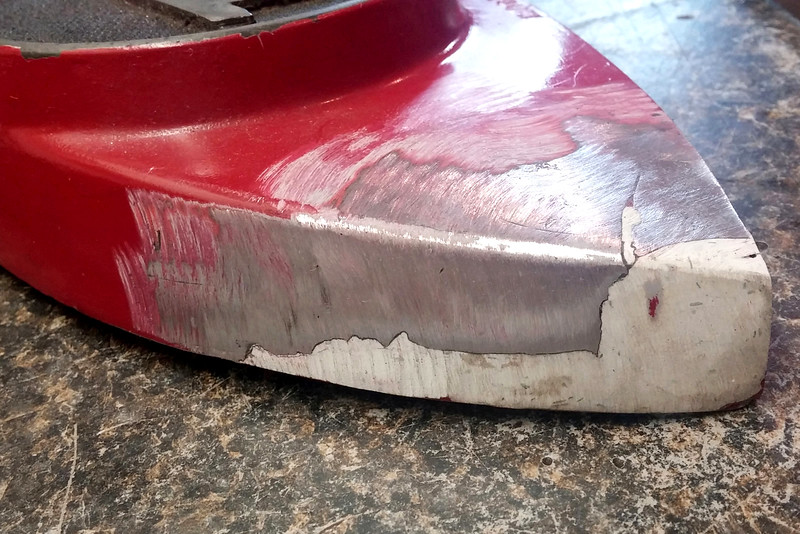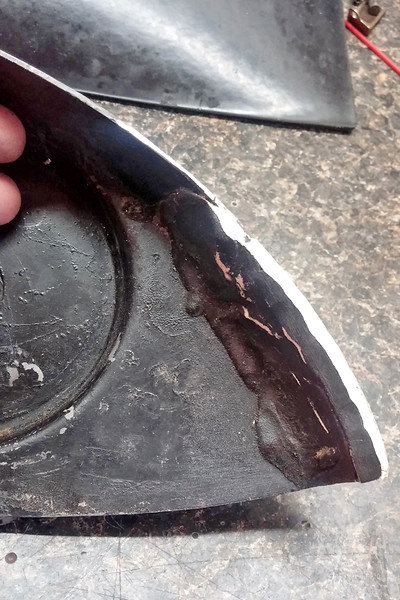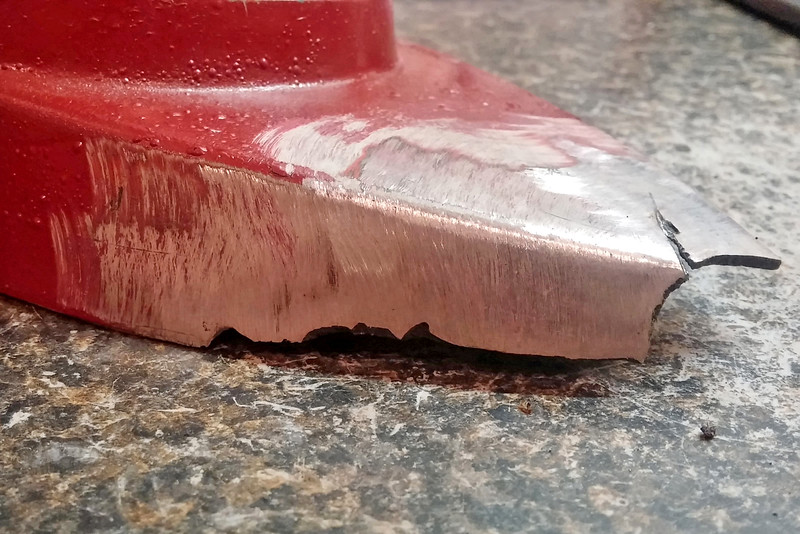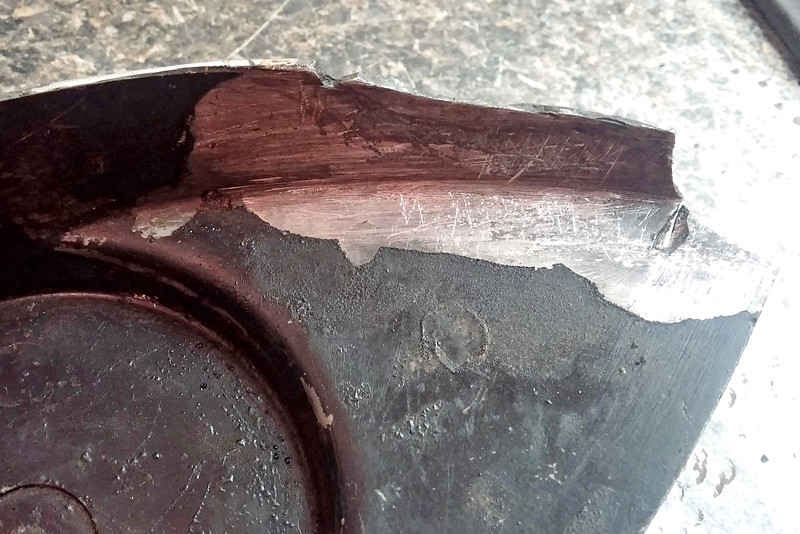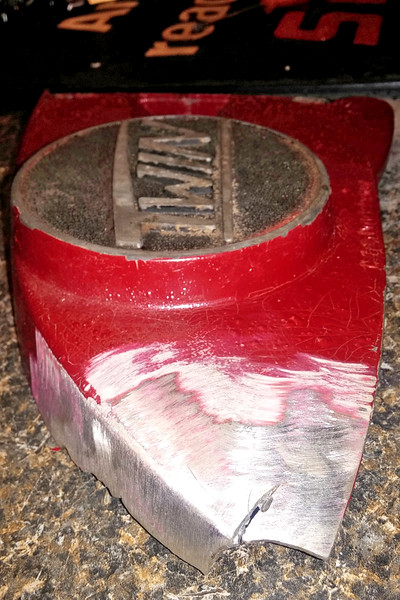Here's the broken fuel tank, with all of the silicone removed. This was a known issues with this saw. I understand that it's a common problem with this model. It looks like someone previously tried to plastic weld it as well.
My Solo Twin gas tank has a huge split in it as well. It comes from people leaving them sitting with gas in them and temperature changes make the tank swell and collapse.






